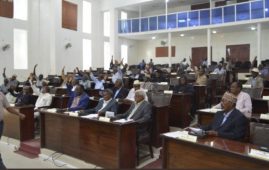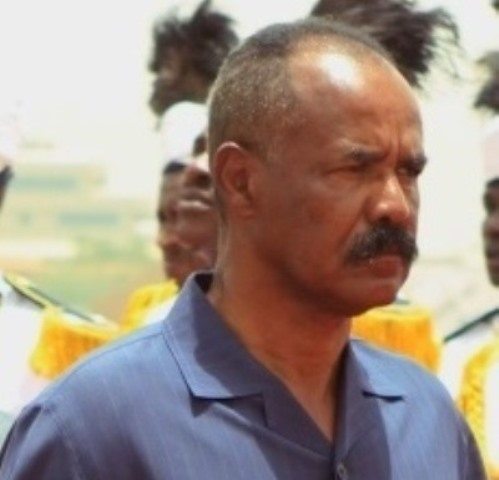When nations gather in Busan, South Korea, for the fourth High Level Forum on Aid Effectiveness, transparency will be up for discussion. A study by campaign group Publish What You Fund finds that most international aid donors are still not open enough about their aid programmes, and some offer no information at all.
The aid watchdog checked on whether donors publish information about their budgets, their allocation and procurement policies, or audit reports on their own performance. And what about their country programmes? Did they publish their strategies, projected budgets, evaluations and results?
The activities donors funded were also looked at more closely – could outsiders find out about the projects, what they were doing, how they were funded, and details of tenders, contracts and impact assessments?
The study ranks 58 aid-giving countries and organizations according to their openness about 37 aspects of their aid programmes.
Previous Forum meetings started examining the issue, and the International Aid Transparency Initiative was launched in Accra, Ghana, in 2008. Some donors have made improvements.
How well did they do?
The World Bank’s International Development Association (IDA) and the International Bank for Reconstruction and Development head the index. They supplied 78 percent of the information requested – enough to be classed as ‘Fair’. No donor earned a ‘Good’.
The World Bank was more open about its operations than it was about itself, declining to publish its current budget, proposed forward budget or audit results, and although information was available, it was scattered across various websites and data bases and not always easy to find.
Earlier in 2011 the World Bank became the first multilateral donor to attain the International Aid Transparency Initiatives openness standards.
Two more multilateral donors, the Global Fund and the African Development Bank, come next, closely followed by the best of the national donors – the Netherlands, the UK Department for International Development (UK-DFID) and Sweden.
It may be tempting to assume that multilateral institutions do better because the governments that fund them demand transparency, but there is no clear pattern; some – notably the Global Vaccines Alliance (GAVI) and the European Investment Bank – were well down in the lower half of the table.
Larger and longer-established donors tend to be more open than smaller, newer ones, but not always. Estonia scores well; Spain and Italy do not. China is the only one of the BRICS countries – Brazil, Russia, India, China, South Africa – appearing in the table. It was one of the less transparent countries, but not the worst. At the bottom were Greece, Cyprus and Malta, the last two scoring zero after they provided none of the required information.
The United Nations Development Programme (UNDP) is the only UN agency in the index. It scores particularly highly on transparency about its own organization, getting 58 percent and ranking 10th overall.
The United States shows the inconsistency that can occur between agencies from the same country. The Millennium Challenge Corporation does well, appearing in the top group of nations and multilaterals, but the main American aid body, USAID, achieves only 25 percent transparency and is placed 38th. It is open about its allocation and procurement policies and, unusually, its own audit is made public, but it does not publish country information about USAID operations.
Four other US funding agencies are also rated: the President’s Emergency Plan for AIDS Relief (PEPFAR), the State Department, the Department of Defence, and the Treasury. None do particularly well: Defence and the Treasury rank in the bottom group, not much ahead of China.
All in all, says Karin Christiansen, Director of Publish What You Fund, the results are very disappointing. "This lack of transparency leads to waste, overlap and inefficiency. It impedes efforts to improve governance and reduce corruption, and makes it hard to measure results. At a time when overseas aid budgets are under pressure, transparency and accountability matter more than ever."
It would help recipient nations to know what the aid allocation and procurement policies of donors are, and the strategy and proposed budget over the next three years in relation to their own country. On the other hand, publishing donor evaluations and the terms and conditions of funding could be embarrassing.
Many donors make transparency a proviso for aid, but some – Australia, Canada, Finland, Ireland, Norway and US-PEPFAR – fail to practice what they preach.
UK-DFID was rated the second best national donor. "Britain has. made aid much more transparent, publishing all spending data over £500 and establishing a new independent watchdog. so that taxpayers can see exactly how and where aid money is being spent. Aid programmes must be designed on the basis of clear evidence, not guesswork," says Andrew Mitchell, the Secretary for International Development.
Yet Britain only scores 63 percent and does not reveal potentially embarrassing data such as its country strategies or evaluations. It is also discreet about project conditions, agreements and memoranda of understanding.
For all donors there is the unspoken fear of the unpleasantness that is likely to follow when an ally discovers it is getting less aid or aid on more restrictive terms than its neighbour.
Publish What You Fund will be lobbying hard in Busan for greater transparency, but a good deal of reticence is likely to remain.
***********
This article first appeared on IRIN (the humanitarian news and analysis service of the UN-OCHA), Nov. 17, 2011 with the title ‘AID POLICY: Donors still far from transparent’. Items from IRIN are published in this blog with a written permission to do so. Yet, this doesn’t necessarily indicate an endorsement of the claims therein.
Check the aid archive for previous and forthcoming posts.






1 Comment on this post
Comments are closed.
Leave a Comment